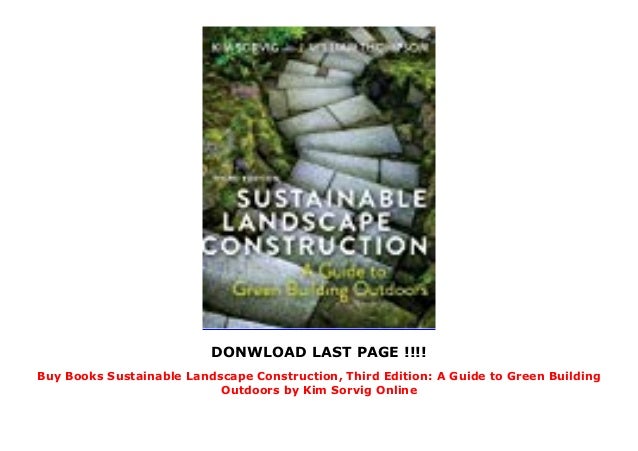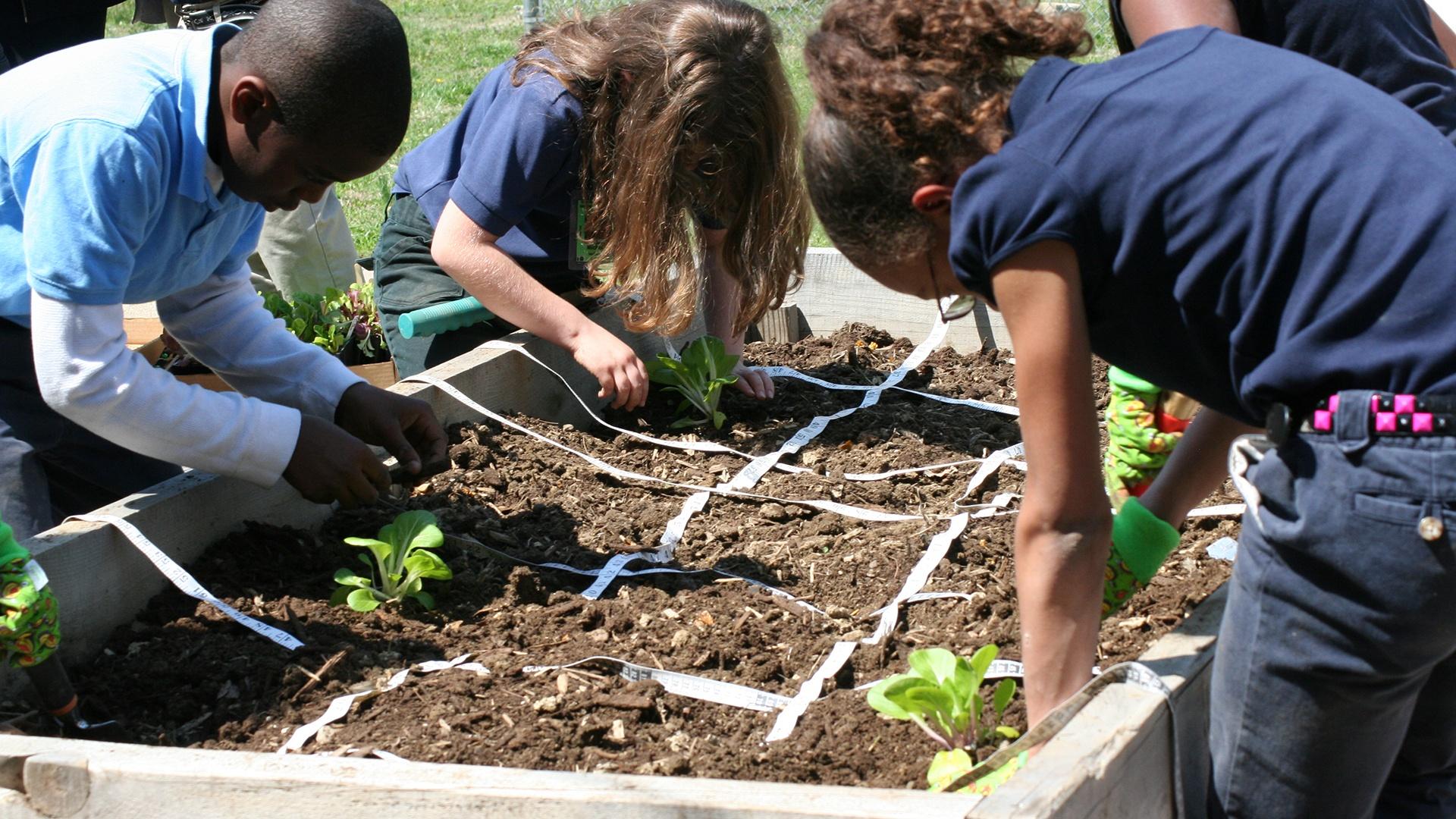
Building a Greener Tomorrow: Navigating Sustainable Landscape Construction Standards
In an era defined by environmental consciousness, the construction industry stands at a pivotal crossroads. Traditional practices, often resource-intensive and ecologically disruptive, are giving way to more sustainable alternatives. This shift is particularly evident in landscape construction, where the integration of ecological principles is transforming how we design, build, and maintain outdoor spaces. Sustainable landscape construction standards are not merely aspirational goals; they are increasingly becoming essential benchmarks for responsible development.
Understanding Sustainable Landscape Construction
Sustainable landscape construction encompasses a holistic approach that minimizes environmental impact, conserves resources, and enhances the ecological integrity of a site. It goes beyond simple aesthetics to consider the long-term effects of construction activities on soil, water, air, and biodiversity. This involves careful planning, thoughtful material selection, and the implementation of practices that promote ecological health.
Key Principles of Sustainable Landscape Construction
Several core principles underpin sustainable landscape construction:
- Resource Conservation: Minimizing the use of water, energy, and raw materials.
- Soil Health: Protecting and improving soil structure, fertility, and biological activity.
- Water Management: Implementing strategies for efficient irrigation, stormwater management, and water quality protection.
- Biodiversity Enhancement: Creating habitats that support native plants and wildlife.
- Waste Reduction: Minimizing construction waste through recycling, reuse, and efficient material management.
- Pollution Prevention: Reducing air, water, and noise pollution during construction and throughout the landscape’s lifecycle.
- Lifecycle Assessment: Evaluating the environmental impacts of materials and practices from cradle to grave.
The Importance of Sustainable Standards
Why are sustainable landscape construction standards so crucial? The answer lies in the numerous benefits they offer, not only to the environment but also to communities and the economy.
Environmental Benefits
Sustainable practices directly address some of the most pressing environmental challenges of our time:
- Climate Change Mitigation: Reducing greenhouse gas emissions through energy-efficient design, carbon sequestration in plants and soils, and the use of sustainable materials.
- Water Conservation: Decreasing water consumption through efficient irrigation systems, drought-tolerant plants, and rainwater harvesting.
- Biodiversity Preservation: Protecting and restoring natural habitats, supporting native species, and enhancing ecological resilience.
- Soil Conservation: Preventing soil erosion, improving soil health, and reducing the need for synthetic fertilizers and pesticides.
- Pollution Reduction: Minimizing air and water pollution from construction activities, fertilizers, and pesticides.
Economic Benefits
Beyond environmental gains, sustainable landscape construction offers significant economic advantages:
- Reduced Operating Costs: Lower water and energy bills through efficient design and technology.
- Increased Property Values: Sustainable landscapes can enhance property values and attract environmentally conscious buyers.
- Job Creation: The green building industry is a growing sector, creating new jobs in design, construction, and maintenance.
- Resource Efficiency: Minimizing waste and maximizing the use of recycled materials can reduce construction costs.
- Long-Term Durability: Sustainable landscapes are often more resilient and require less maintenance over time.
Social Benefits
Sustainable landscapes contribute to healthier, more vibrant communities:
- Improved Air Quality: Plants absorb pollutants and release oxygen, improving air quality and reducing respiratory problems.
- Reduced Urban Heat Island Effect: Green spaces help cool urban areas, mitigating the urban heat island effect and reducing energy consumption for air conditioning.
- Enhanced Mental and Physical Health: Access to green spaces has been linked to improved mental and physical health, reducing stress and promoting physical activity.
- Community Engagement: Sustainable landscape projects can foster community engagement and create opportunities for education and stewardship.
- Aesthetic Improvements: Well-designed sustainable landscapes enhance the beauty and appeal of communities.
Navigating Existing Standards and Guidelines
Several organizations and initiatives have developed standards and guidelines for sustainable landscape construction. These frameworks provide a roadmap for designers, contractors, and property owners seeking to implement sustainable practices. Understanding these standards is crucial for navigating the complex landscape of sustainable construction.
LEED (Leadership in Energy and Environmental Design)
LEED is a globally recognized green building rating system developed by the U.S. Green Building Council (USGBC). While LEED primarily focuses on buildings, it also includes significant credits for sustainable site development. These credits address various aspects of landscape construction, including:
- Sustainable Sites: Protecting and restoring natural habitats, managing stormwater runoff, and reducing heat island effect.
- Water Efficiency: Reducing water consumption for irrigation through efficient technologies and drought-tolerant plants.
- Materials and Resources: Using recycled and locally sourced materials, minimizing construction waste, and promoting material reuse.
- Innovation in Design: Recognizing innovative approaches to sustainable landscape design and construction.
LEED certification can be a valuable tool for demonstrating a commitment to sustainability and achieving recognition for green building practices.
Sustainable Sites Initiative (SITES)
SITES is a comprehensive rating system specifically designed for sustainable landscape development. It focuses on the ecological benefits of landscapes and aims to transform land development practices. SITES provides a framework for designing, constructing, and maintaining sustainable landscapes that:
- Protect and restore ecosystems.
- Conserve water.
- Reduce soil erosion.
- Minimize the use of fertilizers and pesticides.
- Enhance human health and well-being.
SITES certification is a rigorous process that requires careful planning, documentation, and performance monitoring. However, it offers a high level of recognition for sustainable landscape practices.
Sustainable Landscape Management (SLM)
SLM encompasses a range of practices aimed at maintaining landscapes in an environmentally responsible manner. These practices include:
- Integrated Pest Management (IPM): Using biological controls, cultural practices, and targeted pesticide applications to minimize pesticide use.
- Water-Efficient Irrigation: Using drip irrigation, smart controllers, and rainwater harvesting to reduce water consumption.
- Soil Health Management: Improving soil health through composting, mulching, and soil amendments.
- Native Plant Selection: Choosing native plants that are adapted to the local climate and require less water and maintenance.
- Waste Reduction: Composting yard waste and using recycled materials.
While SLM is not a formal certification program, it provides a set of principles and practices that can guide sustainable landscape maintenance.
Local and Regional Guidelines
In addition to national and international standards, many local and regional governments have developed their own guidelines for sustainable landscape construction. These guidelines often address specific environmental challenges and priorities within a particular region. For example, some regions may focus on water conservation, while others may prioritize biodiversity preservation. It is important to be aware of and comply with local guidelines when planning and implementing sustainable landscape projects.
Implementing Sustainable Landscape Construction: A Step-by-Step Guide
Implementing sustainable landscape construction requires a systematic approach that considers all aspects of the project, from planning and design to construction and maintenance. Here’s a step-by-step guide to help you navigate the process:
1. Planning and Design
The planning and design phase is crucial for setting the foundation for a sustainable landscape. This involves:
- Site Assessment: Conducting a thorough site assessment to identify existing conditions, including soil type, hydrology, vegetation, and wildlife habitat.
- Goal Setting: Defining clear sustainability goals for the project, such as reducing water consumption, enhancing biodiversity, or minimizing waste.
- Design Development: Developing a landscape design that incorporates sustainable principles, such as water-efficient irrigation, native plant selection, and stormwater management.
- Material Selection: Choosing sustainable materials that are recycled, locally sourced, and durable.
- Erosion and Sediment Control: Implementing erosion and sediment control measures to protect soil and water quality during construction.
2. Construction
The construction phase is where the design is brought to life. Sustainable construction practices include:
- Waste Management: Implementing a waste management plan to minimize construction waste through recycling, reuse, and efficient material management.
- Soil Protection: Protecting existing soil from compaction and contamination during construction.
- Water Conservation: Using water-efficient construction techniques, such as dust control measures that minimize water use.
- Pollution Prevention: Preventing air and water pollution from construction activities through proper equipment maintenance and spill prevention measures.
- Habitat Preservation: Protecting existing vegetation and wildlife habitat during construction.
3. Planting and Establishment
The planting and establishment phase is critical for ensuring the long-term success of the landscape. This involves:
- Native Plant Selection: Choosing native plants that are adapted to the local climate and require less water and maintenance.
- Proper Planting Techniques: Using proper planting techniques to ensure plant survival and establishment.
- Soil Amendments: Amending the soil with compost and other organic matter to improve soil health and fertility.
- Mulching: Applying mulch to conserve soil moisture, suppress weeds, and regulate soil temperature.
- Irrigation: Providing supplemental irrigation as needed to establish plants, but gradually reducing irrigation as plants become established.
4. Maintenance
Sustainable landscape maintenance is an ongoing process that ensures the long-term health and sustainability of the landscape. This involves:
- Integrated Pest Management (IPM): Using biological controls, cultural practices, and targeted pesticide applications to minimize pesticide use.
- Water-Efficient Irrigation: Using drip irrigation, smart controllers, and rainwater harvesting to reduce water consumption.
- Soil Health Management: Improving soil health through composting, mulching, and soil amendments.
- Pruning: Pruning plants to maintain their health, shape, and appearance.
- Weed Control: Controlling weeds through manual removal, mulching, and targeted herbicide applications.
- Waste Reduction: Composting yard waste and using recycled materials.
Challenges and Opportunities
While the benefits of sustainable landscape construction are clear, there are also challenges to overcome. These challenges include:
- Higher Upfront Costs: Sustainable materials and technologies can sometimes be more expensive than conventional alternatives.
- Lack of Awareness: Many designers, contractors, and property owners are not fully aware of sustainable landscape construction standards and practices.
- Limited Availability of Sustainable Materials: In some regions, sustainable materials may be difficult to find or may not be readily available.
- Resistance to Change: Some individuals and organizations may be resistant to adopting new practices.
However, these challenges also present opportunities for innovation and growth. By addressing these challenges, we can accelerate the adoption of sustainable landscape construction practices and create a more sustainable future.
Overcoming the Challenges
Several strategies can help overcome the challenges to sustainable landscape construction:
- Education and Training: Providing education and training to designers, contractors, and property owners on sustainable landscape construction standards and practices.
- Incentives and Rebates: Offering financial incentives and rebates to encourage the adoption of sustainable practices.
- Policy and Regulation: Implementing policies and regulations that promote sustainable landscape construction.
- Research and Development: Investing in research and development to create new and innovative sustainable technologies and materials.
- Collaboration: Fostering collaboration among designers, contractors, property owners, and government agencies.
The Future of Sustainable Landscape Construction
The future of landscape construction is undoubtedly sustainable. As environmental awareness grows and the demand for green buildings increases, sustainable landscape practices will become increasingly prevalent. Innovations in technology and materials will further drive the adoption of sustainable practices, making them more cost-effective and accessible.
Some key trends shaping the future of sustainable landscape construction include:
- Green Infrastructure: Integrating natural systems into the built environment to provide ecological services, such as stormwater management, air purification, and habitat creation.
- Living Walls and Green Roofs: Incorporating vegetation into building facades and rooftops to reduce energy consumption, improve air quality, and enhance biodiversity.
- Smart Irrigation Systems: Using sensors and data analytics to optimize irrigation and reduce water consumption.
- Recycled and Reclaimed Materials: Using recycled and reclaimed materials to reduce waste and conserve resources.
- Biophilic Design: Designing landscapes that connect people with nature, promoting health and well-being.
Conclusion
Sustainable landscape construction standards are essential for creating a more environmentally responsible and resilient built environment. By understanding and implementing these standards, we can minimize environmental impact, conserve resources, enhance biodiversity, and create healthier, more vibrant communities. While challenges remain, the opportunities for innovation and growth are vast. As we move forward, let us embrace sustainable landscape construction as a cornerstone of a greener, more sustainable future. The journey towards sustainable landscapes is not just a trend; it’s a necessary evolution towards a healthier planet for generations to come.


